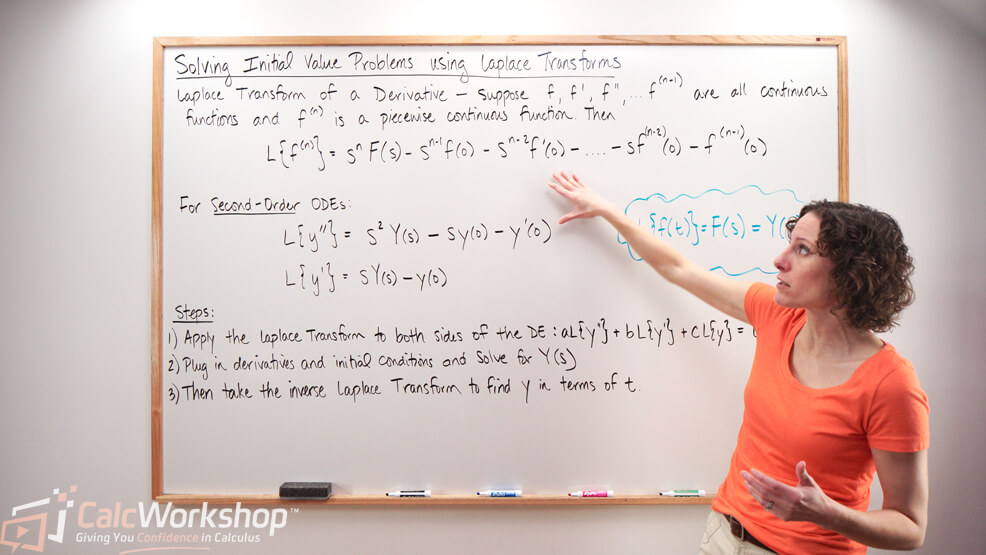Have you ever wondered how to turn a complex differential equation into a simpler algebraic problem?

Jenn, Founder Calcworkshop®, 15+ Years Experience (Licensed & Certified Teacher)
Think of the Laplace transform as a magical key that unlocks the world of differential equations, turning them into more manageable algebraic expressions.
This powerful tool helps us solve initial value problems by applying the Laplace transform to the derivatives involved.
Let’s take a closer look.
Laplace Transform of Derivatives
Key Formula
Laplace transforms of derivatives are ideally suited to solving linear initial value problems with constant coefficients, but why?
Let’s find out…
If we are given a function
Which means, if
In fact, this theorem shows how ideally suited the Laplace transform is for solving linear initial value problems in which the differential equation has constant coefficients.
Solving an Initial Value Problem Using Laplace Transform
Step-by-Step Example
This may seem strange at first, but let’s work through a question to see it in action.
Use the method of Laplace transforms to solve:
Step 1: First, we will take the Laplace transform of both sides of the differential equation:
Now we will use our operations and properties of Laplace transforms to transform the DE into an algebraic equation in terms of
Step 2: Apply Laplace transform to both sides of the equation:
Step 3: Replace
Step 4: Combine the terms containing
Step 5: Add 3 to both sides of the equation to isolate
Step 6: Combine the fractions on the right-hand side:
Step 7: Divide both sides by
Now all we have to do is apply the inverse Laplace transform to find the solution of the IVP with the help of Partial Fractions.
Step 8: Apply the inverse Laplace transform to find the solution:
Step 9: Perform partial fraction decomposition:
Step 10: Find the values of A and B:
Step 11: Apply the inverse Laplace transform to each term separately:
Step 12: Factor out the constants from the inverse Laplace transforms:
Step 13: Finally, find the inverse Laplace transforms of the remaining terms to obtain the solution:
And that’s it.
- Apply Laplace transform to both sides
- Use properties to transform the DE into an algebraic equation
- Solve the transformed equation
- Apply inverse Laplace transform for the solution of the original IVP
Don’t worry. Everything will make more sense once you see more examples.
Next Steps
Get ready, as you’ll…
- Learn how to take the derivative of a Laplace Transform and derive two essential formulas.
- Apply these formulas to solve several second-order differential equations.
- Discover how using Laplace Transforms for nonhomogeneous differential equations makes the process easier by allowing you to plug in your initial conditions as you go.
It’s going to be fun. So, let’s get to it!
Video Tutorial w/ Full Lesson & Detailed Examples

Get access to all the courses and over 450 HD videos with your subscription
Monthly and Yearly Plans Available
Still wondering if CalcWorkshop is right for you?
Take a Tour and find out how a membership can take the struggle out of learning math.